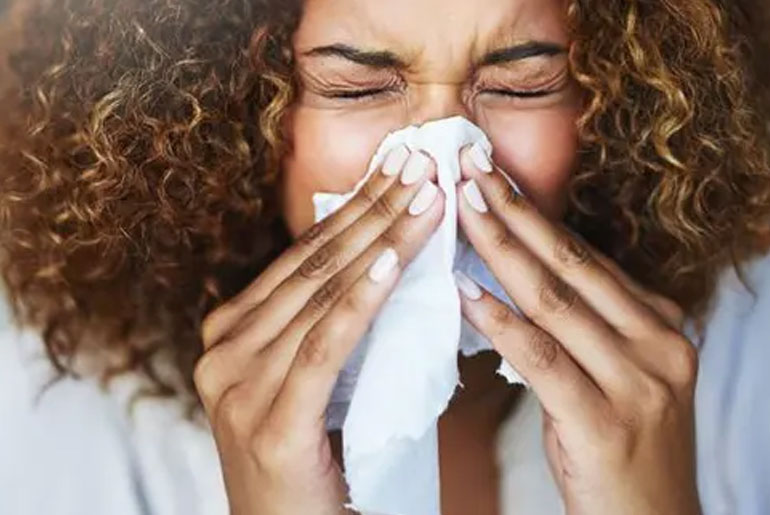Allergy is a significant health concern globally, influenced by both environmental and host factors. Host factors such as race, genetics, age, and gender play a crucial role in triggering allergies. World Allergy Week, observed annually from June 23 to June 29, focuses on strategies to reduce allergy risks and enhance immunity. Climate change exacerbates this issue by altering environmental conditions that affect allergen distribution and concentration. These changes can increase the prevalence and severity of allergies worldwide. Addressing the link between climate change and allergies is essential for effective public health management and mitigation strategies. By understanding and addressing these connections, we can better protect populations from the growing impacts of environmental change on allergic diseases.
In India, allergic diseases are increasingly prevalent, influenced significantly by factors such as industrialization, urbanization, and lifestyle changes. Pollution plays a pivotal role in exacerbating these conditions, including allergic rhinitis, allergic asthma, allergic conjunctivitis, and allergic skin diseases. Pollutants induce oxidative stress within the body, triggering inflammation and heightened reactivity of the airways. This can manifest in symptoms like sneezing, a runny or itchy nose, coughing, wheezing, and itchy, watery eyes. The complex interplay between environmental pollutants and allergic responses underscores the urgent need for comprehensive strategies to mitigate pollution levels and protect public health from the increasing burden of allergic diseases in India.
Climate change significantly impacts allergies through various mechanisms, exacerbating allergic reactions and respiratory conditions in vulnerable individuals. Here’s how climate change relates to allergies:
1. Longer and More Intense Pollen Seasons
- Extended Growing Seasons: Rising global temperatures and elevated CO₂ levels contribute to longer periods of plant growth and pollen production.
- Increased Pollen Production: Higher CO₂ levels stimulate plants to produce more pollen. This abundance of pollen extends the allergy season, exposing individuals to allergens for a longer duration.
- Potency of Pollen: Elevated CO₂ levels can also increase the allergenicity of pollen grains, making them more potent. This means pollen contains higher concentrations of proteins that trigger allergic reactions, leading to more severe symptoms.
2. Changes in Allergen Distribution
- Geographical Shifts: Warmer temperatures allow allergenic plants to thrive in new regions where they may not have previously grown. This expansion exposes populations to allergens they were not historically exposed to, increasing the prevalence of allergies in those areas.
3. Impact on Indoor Allergens
- Mold Growth: Climate change influences indoor allergens by creating conditions that favor mold growth. Increased humidity and warmer temperatures provide ideal environments for molds to flourish indoors.
- Dust Mites: Similarly, warmer temperatures promote the proliferation of dust mites, another common indoor allergen.
- Extreme Weather Events: Intense storms and flooding events, which are becoming more frequent and severe due to climate change, can lead to water damage in buildings. This moisture can foster mold growth and exacerbate indoor allergen exposure.
Health Implications
- Respiratory Allergies: Individuals with respiratory allergies, such as allergic rhinitis (hay fever) and asthma, experience intensified symptoms due to prolonged pollen seasons and increased pollen potency.
- Indoor Allergies: Those sensitive to indoor allergens like mold and dust mites may see exacerbated symptoms as climate conditions create more favorable environments for these allergens.
Public Health Strategies
- Awareness and Education: Increased understanding of the relationship between climate change and allergies can help individuals recognize and manage their symptoms more effectively.
- Adaptation Measures: Healthcare providers and public health agencies may need to implement strategies to mitigate the impacts of longer pollen seasons and heightened allergen exposure, such as improved allergy management plans and early warning systems for pollen peaks.
- Environmental Actions: Addressing climate change through mitigation efforts (reducing greenhouse gas emissions) and adaptation measures (building resilience to climate impacts) can ultimately help reduce the severity and prevalence of allergy-related health issues.
In conclusion, climate change is intricately linked to the exacerbation of allergies through extended pollen seasons, increased pollen potency, shifts in allergen distribution, and the promotion of indoor allergens. These effects highlight the importance of addressing climate change as a public health priority to protect vulnerable populations from worsening allergic conditions.
Disclaimer:
The information contained in this article is for educational and informational purposes only and is not intended as a health advice. We would ask you to consult a qualified professional or medical expert to gain additional knowledge before you choose to consume any product or perform any exercise.







